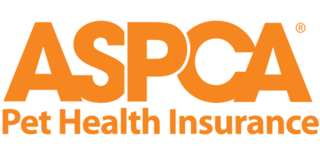Best Pet Insurance Companies
Pet insurance can help pay for your pet’s medical care, with many policies covering up to 90 percent of your vet bills. Our reviews evaluate the best pet insurance companies to help you identify which best suits your needs.
Should you need more information before diving into the reviews, our guide section explains how pet insurance works, what procedures aren’t typically covered by providers and how to choose the right coverage. We also define key components of your policy such as payment caps, types of coverage and premiums.
Keep reading to learn more about the best pet insurance companies on the market today.
Our Top Picks for Best Pet Insurance of 2022
- Healthy Paws - Best for Alternative Therapies
- ASPCA - Best for Hereditary and Congenital Conditions
- Spot - Best for Unlimited Coverage
- Pumpkin - Best for Puppies and Kittens
- Figo - Best for Reimbursement Options
- Embrace - Best for Older Pets
- Pets Best - Best for Treatment of Mobility Issues
- Lemonade - Best for Fast Claims Processing
- Trupanion - Best for Direct Payment to Vets
- Nationwide - Best for Exotic Pets
Honorable Mentions: Fetch by The Dodo, Many Pets and Metlife Pet Insurance
Best Pet Insurance Company Reviews
Why we chose Healthy Paws: Most pet insurance providers exclude alternative therapies from their policies, but Healthy Paws covers treatments like acupuncture chiropractic care, hydrotherapy, physical therapy, laser therapy and massage therapy, as long as it’s prescribed and performed by a licensed veterinarian.
- No per-incident, annual or lifetime caps
- Quick claim processing
- Covers alternative therapy for diagnosed conditions
- Direct payments available under certain conditions
- Limited coverage for hip dysplasia
- Only a single policy offered
- No coverage for behavioral modification
- Limited coverage options for senior pets
Healthy Paws offers just one accident and illness policy for cats and dogs. It has no per-incident, annual or lifetime benefit caps, and you can choose from a $100, $200 or $500 deductible.
The company provides quick claims processing through its mobile app, and most claims are processed in just two days. It also offers a direct payment option instead of reimbursement if you can’t afford the upfront veterinary bill.
Healthy Paws is best for pets that are enrolled while they’re young, as coverage options are more limited and reimbursement rates less generous for senior pets.
Why we chose ASPCA: We picked ASPCA as the best pet insurance for congenital or hereditary conditions because it doesn’t withhold coverage for these illnesses if you enroll your pet past a certain age. Your pet will be fully insured (and relatively quickly, too), thanks to the short 14-day waiting period.
- Standout coverage for hereditary and congenital illnesses
- No upper age limit for enrollment
- Covers stem cell therapy and microchipping
- Warns that claim processing may take up to 30 days
- Monthly payments incur a transaction fee
- The website is not user friendly
The American Society for the Prevention of Cruelty to Animals (ASPCA) offers accident-only, accident and illness and preventive care for cats and dogs. Riding enthusiasts can also insure their horses, but only in certain states.
ASPCA’s premium rates are some of the most affordable around. The company is also more flexible on certain policy terms than many of its industry counterparts.
While some other companies’ policies set an age limit on coverage for hereditary or congenital conditions, ASPCA guarantees coverage no matter your pet’s age at enrollment, as long as the conditions aren’t pre-diagnosed. Additionally, curable pre-existing conditions are covered, provided your pet is symptom-free for at last 180 days. Other companies may make you wait up to a year.
This insurer also falls short with its lengthy claims processing time. Pet care is expensive, and waiting 30 days for insurance reimbursement isn’t a good selling point, considering some competitors process claims in a matter of days.
Why we chose Spot: We picked Spot as the best pet insurance for unlimited coverage because it caters to pet parents who want to maximize their pet’s coverage, no matter the cost. Spot is also a fine choice for older pets, since there’s no age limit on coverage.
- Unlimited annual coverage available
- No upper age limit
- 24/7 telehealth helpline
- Pet owners have 270 days (around eight months) to file a claim
- Higher-than-average premiums for young pets, especially for unlimited coverage
- Charges transaction fees for monthly, quarterly or semi-annual payments
Spot readily allows you to maximize coverage of your pet. It’s among a relatively few companies that provide policies with a full (100%) coverage option, meaning you are not responsible for any co-payment of bills. In addition, the company offers a very low ($100) deductible option, which further reduces your out-of-pocket payments for care.
That said, choosing one or both of a low co-payment and a low deductible will lead to higher premiums for the policy. And Spot’s prices are already higher than the norm for young pets, although the company has no upper age limit for insuring new animals -- which may make it a good choice if your furry companions are elderly.
Why we chose Pumpkin: Pumpkin is our pick as the best pet insurance for puppies and kittens because it offers a lot for comparatively little. It provides extensive insurance and non-insurance preventive care options tailored to junior animals at an affordable price point.
- Preventive care packages for the particular needs of puppies and kittens
- No upper age limit
- Covers fees for vet exams, the ASPCA Poison Control Center and the Pet Poison Helpline at no extra cost
- No accident-only option
- Preventive plan doesn't cover spay/neuter or dental cleanings
- Most expensive option in our survey
Pumpkin offers affordable plans with an option to add preventative care packs for young cats and dogs that aren’t included in standard coverage. For example, the company’s puppy preventive care packs include one annual wellness exam fee, four puppy vaccines and one yearly fecal test.
Pumpkin will also refund the cost of up to four vaccines your puppy may have received prior to being insured under the preventive pack, as well as covering lab tests for parasites.
However, Pumpkin Preventive lacks dental cleanings and spay/neuter surgeries, and (unlike most companies) it won’t reimburse you if you purchase a separate wellness package.
Why we chose Figo: Most competitors only offer up to 90% reimbursement. Figo stands out as the best pet insurance for reimbursement options because pet owners can choose up to 100% reimbursement without annual payout limits and avoid copayments entirely.
- Up to 100% reimbursement with no annual limits
- No upper age enrollment limit
- Low deductible options
- Most affordable premiums
- 1-day waiting period for accidents
- No coverage on hereditary conditions if the pet is enrolled after 2nd birthday
- Low payout limits in wellness care plan
- Vet exam fees and physical therapy coverage require separate riders
FIGO offers pet owners the option to reduce their copayment to 0%, thanks to its 100% reimbursement option. (As a rule, the lowest copayment offered by other providers is 10%.) Figo doesn’t enforce annual limits, either, but the company does apply a lifetime maximum – that is, how much it will reimburse over the lifetime of your pet.
Be prepared to pay higher than average premiums for a policy with 0% copay, unlimited payout benefits or both. Figo also enforces strict limits on its coverage for hereditary conditions.
Additionally, benefits such as the exam fee reimbursement and physical therapy are only available as separate riders — other providers include these benefits in their base policy.
Figo’s Pet Cloud app features comprehensive mobile support. With the app, you can contact a licensed veterinarian 24/7, manage your pet’s insurance documents and make payments, among other transactions.
Why we chose Embrace: Aging pets shouldn’t be spared insurance coverage when they need it most – and owners are prepared to pay sharp, age-related increases in premiums to buy a policy. We picked Embrace as the best pet insurance for older pets because it extends comprehensive coverage to pets under 14 years and accident-only coverage to pets 15 years or older.
- High upper age limit for enrollment
- High annual reimbursement limit option compared to other competitors with annual caps
- Includes up to six months of pet travel insurance
- 25% discount for military members, veterans and eligible relatives on USAA-issued policies
- Limited wellness benefits
- Caps dental illness coverage at $1,000 a year
- Patellar luxation and hip dysplasia are excluded for six months
Embrace is willing to provide accident and illness coverage to pets of up to 15 years. After that age, you can still purchase coverage, albeit only for accidents. That’s somewhat of a rarity, as other companies generally won’t insure pets of 10 or older in any way.
Embrace doesn’t offer wellness benefits as a separate policy. Instead, pet owners can sign up for the Wellness Rewards plan and contribute a specific amount to cover preventive care expenses. Make sure your annual contributions match the expected level of preventative care, as unused funds don’t rollover for the following year.
Another benefit of Embrace pet insurance is its shrinking deductibles. Every year you don’t receive a claim reimbursement, Embrace will reduce your annual deductible by $50.
All policies come with a 30-day money-back guarantee or a pro-rated refund — if you’ve already filed a claim within that time frame.
Why we chose Pets Best: Pets Best has a wide range of coverage options and deductibles, and it offers coverage for pets as young as seven weeks. It’s also one of the few pet insurance companies that cover prosthetic devices and wheelchairs.
- Coverage for prosthetic devices and wheelchairs
- Wide range of deductibles
- Covers pets as young as seven weeks with no upper age limit
- Direct payments to vets available upon request
- Slow claims processing
- Excludes alternative therapy and behavioral modification
- Policy upgrades are not available until the renewal date
Pets Best offers accident and illness policies and also sells multiple wellness plans to cover your pet’s routine care.
Most insurers require pets to be at least eight weeks old to enroll, but Pets Best will insure pets at seven weeks. There is no upper age limit, either, so you can get coverage for senior pets.
Insurers don’t always cover treatments for mobility issues, but Pets Best provides coverage for wheelchairs and prosthetic devices when prescribed by a veterinarian to treat a covered accident or illness.
However, we noted that Pets Best has unusual coverage exclusions: pet owners won’t be reimbursed for parasite treatment (even if the pet is up-to-date on its vaccines and preventive medications) or alternative treatments such as kinesiology, electromagnetic therapy and massages.
Why we chose Lemonade: We picked Lemonade as the best pet insurance for speedy claims. The company uses novel, AI-powered processing, which promises to deliver claims very quickly via the Lemonade app. The ability to direct a part of the company’s profit to a charity of your choice may also appeal to many pet owners.
- Quick claims processing — in minutes rather than weeks via mobile app
- Multiple discounts available
- A portion of payments go to charities
- Customizable coverage
- Only available in 38 states
- Policies can only be adjusted at renewal
- Older pets may not be eligible for coverage
Lemonade’s accident and illness policy covers diagnostics, procedures and medications for covered conditions. Vet visit fees, dental illnesses, end-of-life services and physical therapy are excluded from the base policy (which may translate to lower premiums) but you can add these benefits as riders if they’re available in your state.
Pet owners can further enhance coverage with a preventative care rider that reimburses the cost of annual checkups, vaccines and parasite screening.
Lemonade is currently available in 38 states, but you can sign up for updates on its website. That said, users may find Lemonade’s website hard to navigate. To get a quote, you have to input a lot of information that other insurers don’t require. And if you have questions that the automated chat can’t answer, talking with a live agent via chat isn’t possible.
Why we chose Trupanion: Usually, pet owners have to pay the vet bill in full before receiving reimbursement from pet insurance providers. With Trupanion’s direct payment software, your vet can file a claim in-office and receive payment almost immediately. You needn’t pony up the entire bill and wait for the covered proportion to be reimbursed to you.
- Policyholders can set their deductible to $0
- No payout limits for any benefits (per incident, monthly or lifetime)
- Free 30-day coverage with partnering shelters, breeders or vets
- Covers pets from birth
- High premium rates
- Only one plan option
- No multi-pet discount
Trupanion offers a single insurance plan for cats and dogs. Aside from standard benefits, like diagnostic tests, surgery, hospitalization and prescription medications, coverage also extends to alternative treatments, dental illnesses, prosthetic devices and prescription food.
Trupanion also features a unique benefit: pet owners can extend coverage to breeding and working pets in the following categories: hunting, herding, sledding, guarding, search and rescue, law enforcement, therapy and assistance. Accidents and illnesses associated with breeding, whelping and working will be covered up to 90%.
If your veterinarian uses Trupanion’s direct payment software, you don’t need to file a claim; Trupanion pays the vet directly. Policyholders, then, need not worry about making costly upfront payments or submitting reimbursement claims, which are standard for most of the pet insurance industry.
Trupanion lacks affordability and flexibility – premiums are high and there’s only a single policy option. However, its coverage is comprehensive. If you can afford higher than average premiums, your pet will benefit from 90% reimbursement on all eligible claims and no payout limits per incident, year or lifetime.
Why we chose Nationwide: We picked Nationwide as the best pet insurance for exotic pets because it offers comprehensive insurance for various unconventional animals. Pet owners can relax knowing up to 90% of their expenses for such animals are covered by a reputable insurer.
- No per-incident, annual or lifetime caps
- Covers alternative therapy for diagnosed conditions
- Direct payments available under certain conditions
- Owners of exotic pets must call to get a quote or sign up
- Limited coverage for hip dysplasia
- 12-month waiting period for knee injuries in dogs and cats
Nationwide is the only pet insurance company of its size that offers insurance for avian and exotic pets. The Avian & Exotic Pet Plan provides coverage for most birds, reptiles and small mammals, including goats and pot-bellied pigs. (However, any animal not explicitly listed on the Nationwide website isn’t eligible, including those listed under venomous or endangered species.)
Owners of exotic pets can select up to 90% reimbursement for covered accidents and illnesses and add preventive care riders as well. Just as with dog and cat insurance, pre-existing conditions are excluded from coverage.
Exotic pet owners need to call (844-244-3691) to get a quote or to sign up, but dog and cat insurance is easy to get directly on Nationwide’s website. For these pets, Nationwide offers three accident and illness policy options, along with two wellness care packages.
Other pet insurance companies we considered
In narrowing down our list, these companies stood out in some respects but didn’t quite match the strengths of our top picks.
Fetch by The Dodo
- Reimburses the emergency exam fees
- No lifetime or per-condition limits
- No upper age limit
- Up to $1,000 in coverage for virtual visits
- No preventive care rider or accident-only plan
- Regular medical exams required
- Extended waiting period for knee and hip conditions
Fetch by The Dodo is one of the few insurers that will enroll pets as young as six weeks, making it a good option for owners of young kittens who often go to their new homes at that age. The company has no upper age limit, and it has multiple deductibles and annual benefit options. Fetch by the Dodo policyholders will also get reimbursed for medical boarding, behavior modification and lost pet rewards — up to $1,000 annually for each benefit.
Bottom line: Fetch by The Dodo has the lowest age limit for enrollment of all the companies we looked at, and it has some additional perks and features that can be appealing to pet owners. However, there are some strict rules policyholders have to follow to get claims reimbursed: the pet must receive medical care within 48 hours of noticeable symptoms and pet owners must file a claim no later than 90 days from the invoice date.
Many Pets
- No annual or lifetime payout caps
- Short waiting period for accidents and injuries
- Quick claims processing
- Lower premiums
- No coverage for hip dysplasia in pets over 6 years old
- No coverage for pets 14 or older
- Not available in all states
Many Pets offers a single accident and illness policy, with an optional wellness add-on. The policy covers vet exam fees, medication, treatment, surgery, hospitalization, euthanasia and cremation. You can also add a wellness plan, but it’s not as comprehensive as others — no coverage for fecal and blood tests, spaying/neutering or microchipping.
With Many Pets, you can waive the 15-day waiting period if your pet was previously insured by another provider and the policy was in effect at least 24 hours before the new policy’s activation date.
Bottom line: Many Pets’ accident and illness coverage is comparable to other affordable insurance providers on our list. However, our top picks still have a slight advantage with better preventative care plans, nationwide coverage and a shorter waiting period (180 days) for curable pre-existing conditions.
MetLife Pet Insurance
- Multiple discounts
- Family plans available
- Decreasing deductible for every year without a claim
- Claim processing can take up to 10 days
- No sample policy or detailed wellness benefits online
- Requires 12 months of veterinary records for the first claim
- Six-month waiting periods for certain conditions
MetLife Pet Insurance, previously known as Pet First, offers an easy online application and adjustable coverage options. You can select your maximum benefit amount, ranging from $2,000 to $10,000. Deductibles are as low as $0, or as high as $2,500, and you can take advantage of one or more of the discount programs like discounts for healthcare workers, military, veterans and first responders. Employers that provide pet insurance also qualify for a discounted rate, as well as affinity groups and those that work in animal care.
Bottom line: MetLife Pet Insurance policies allow you to adjust your deductible, reimbursement amount and reimbursement percentage to meet your budget, and you can add a wellness rider to offset routine care expenses. But the company takes longer than some of its competitors to reimburse expenses and wellness benefits are not clearly outlined online, which may leave you wondering what you’re actually paying for.
Pet Insurance Guide
In this section, we go into the particulars of pet insurance, so you know what to expect from most policies. We explain what it is, how much it costs, plan types and tips to choose the right insurer.
Table of contents:
- What is pet insurance?
- Types of pet insurance
- How does pet insurance work?
- How much is pet insurance?
- How to choose the best pet insurance for you
- Is pet insurance worth it?
What is pet insurance?
Pet insurance is a type of indemnity insurance that covers pet medical expenses related to accidents and illnesses. Most companies primarily offer dog and cat insurance — some providers do extend coverage to exotic pets like birds and reptiles, but it accounts for less than 1% of U.S policies, according to the North American Pet Health Insurance Association (NAPHIA).
A significant difference between pet insurance coverage and your own health insurance is that preventive pet care is sold separately. This includes expenses like vaccines, parasite prevention, dental cleanings and microchipping.
Generally, there are no network restrictions with pet insurance — coverage applies to any licensed vet or specialist nationwide. Some providers extend coverage to Canada and overseas territories like Puerto Rico, as well.
Types of pet insurance
When you’re looking to insure your pet, the first thing to do is take a good look at your finances — and how much you’re able and willing to spend in case of an emergency. Pet insurance policies vary in their coverage and, of course, premiums. Understanding the various types of policy, and what each offers, is crucial for understanding how to buy pet insurance.
- Accident-only policies – An accident-only plan may suit you best if your main concern is your cat or dog’s propensity for mishaps (such as poisonings, broken bones, bloating). They’re usually more affordable than plans with more expansive coverage.
- Accident & Illness policies – These are the popular, all-inclusive pet insurance plans, covering both accident and illness coverage. They can be expanded to be truly comprehensive by buying wellness coverage, which is usually an add-on rather than an integrated part of the plan.
- Comprehensive policies – Some insurers offer comprehensive policies covering everything, from accidents to illnesses to wellness and routine care. For example, they may cover the cost of pet dental care, chiropractic care, spaying, vaccinations and even treatment with a pet behaviorist. Naturally, these plans have the heftiest price tag but might be worth it to you for the peace of mind they provide.
If you want to evaluate whether an insurer is right for you, it’s a good idea to download its sample policy, which is usually available on the company website.
Read all its inclusions, exclusions, and restrictions thoroughly. If you’re comfortable with them, and they’re competitive with those of other companies, move on to enroll your pet.
How does pet insurance work?
Pet insurance essentially works by reimbursing your pet’s eligible medical expenses. However, there are additional limitations fleshed out in the policy’s fine print:
- Waiting periods – Your insurance won’t pay for care until a waiting period has elapsed. Most companies require at least 14 days after enrollment before they will reimburse you for a vet visit due to illness.
- Exclusions – The language of pet insurance policies usually excludes some specific conditions. Read the policy carefully before buying, so you'll know what is and isn’t covered.
- Network restrictions – Unlike health insurance for humans, pet insurance generally doesn't have a restricted or preferred network of providers, although some insurers may limit certain coverage to specific vets. There may, however, be geographic restrictions; for example, your pet may not be covered if you travel to Canada or Puerto Rico.
What does pet insurance cover?
Pet insurance coverage reimburses pet owners for the diagnosis and treatment (including medication and hospitalization) of accidents and illnesses. Pet owners who purchase accident-only policies, will only receive reimbursement for issues defined as accidents or injuries.
The following common injuries and illnesses are often covered by pet insurance providers:
Accidents
- Ingestion of a foreign object
- Poisoning
- Bite wounds, cuts or broken bones (including teeth)
- Ingesting a foreign object
- Poisoning
- Torn ligaments
Illnesses:
- Cancer
- Hepatitis
- Diabetes
- Allergies
- Arthritis
- Skin or ear infections
- Urinary tract infections
- Stomach and intestinal problems
- Epilepsy
- Orthopedic conditions such as a torn ligaments or hip dysplasia
What is excluded from pet insurance coverage?
Pet insurance coverage exclusions may vary by provider, so it’s best practice to read the sample policy thoroughly before enrolling. But don’t worry: We’ve got you covered. The following bulleted list explores five of the most common exclusions across the industry.
- Pre-existing conditions - Pet insurance providers will not reimburse for conditions your dog, cat, or other pet already had before you bought the pet insurance policy. Some examples include diabetes, allergies, cancer or arthritis.
- Pre-existing bilateral conditions - Let’s say your pet’s knee suffered a cruciate ligament injury before enrolling in pet insurance. That injury isn’t covered because it’s a pre-existing condition, but if the other knee develops the same issue in the future, it won’t be covered either. The same restriction may apply to other bilateral conditions (issues that occur on both sides of the body) such as cataracts or hip and elbow dysplasia.
- Routine care - Insurance providers exclude routine pet care from coverage but offer reimbursement benefits through wellness packages and riders. These add-ons reimburse a fixed amount for annual checkups, vaccinations, parasite prevention, dental cleanings and spay/neuter surgeries.
- Illnesses caused by lack of preventive care - If your pet gets heartworm after you forgot to administer preventive medicine, pet insurance won’t cover treatment. The same restriction applies to dental illnesses if your pet doesn’t get professional cleanings, flea and tick-borne diseases, and conditions that are preventable with vaccinations.
- Injuries or illnesses linked to owner negligence - Pet insurance won’t cover issues that result from organized fighting, racing or guarding. This exclusion also applies to any harm inflicted by you or a member of your household.
How much is pet insurance?
Generally, cat insurance is more affordable than dog insurance. The average monthly cost of pet insurance with accident and illness coverage is about $50 for dogs and $30 for cats. But the exact amount you’ll spend to insure your pet will vary, and not only by the insurer you choose.
Factors that affect your pet insurance premium
Pet insurance costs vary based on the following factors:
- Pet’s age and breed - Purebreds usually cost more to insure compared to mixed pets. Premiums also increase with age (no matter the breed) and do so sharply for very old animals. In addition, after your dog or cat reaches age of 10 or 12, your choices in insurers will significantly diminish.
- Where you live - Pet insurance tends to be more expensive for pets that live in urban areas, especially on the coasts (New York and California.)
- Deductibles - Most providers allow you to set the deductible, which is the money you must pay before your insurance policy kicks in. Bear in mind that an annual deductible for all care is common, but some companies may also require per-incident or per-condition deductibles.
- Preventative care add-ons - You’ll get the best value from an accident or illness coverage plan, but you could also add coverage for preventative care. Policies covering both routine care and accident or illness care are known as comprehensive coverage.
Additional expenses to keep in mind
The price of pet insurance is not limited to premium payments — you’ll likely have to cover out-of-pocket expenses, even after the insurance kicks in. Consider the following when budgeting for your pet’s insurance coverage:
- Reimbursements - You pay for all vet visits and charges and then file for a reimbursement (some providers may offer direct payment to vets). Plans typically reimburse 70% to 90% of covered expenses.
- Payout caps - Most plans stop reimbursing after you’ve reached your policy’s maximum coverage amount. Most policies have an annual expense cap, but some have caps per incident (illness or injury) or even for the animal’s lifetime. Expect to pay higher premiums for higher caps.
If you’re on a tight budget and need a policy with more affordable premiums, take a look at our best cheap pet insurance page.
How to choose the best pet insurance for you
Pet insurance coverage varies per state, and policy terms can change annually.
To help you choose the best policy, NAPHIA’s Pet Insurance Buying Guide points out what you should consider before selecting coverage.
- Decide which type of policy will be more appropriate - You can choose between accident and illness coverage or an accident-only policy. Accident and illness policies offer the most coverage but are more expensive than accident-only plans. If you want more coverage, you can purchase a wellness rider to cover vaccinations, dental cleanings, annual checkups and parasite prevention.
- Take a close look at what is and isn’t covered - We recommend taking notes of the policy’s terms on hereditary, congenital and chronic conditions (especially if your pet’s breed is prone to a particular issue), dental illnesses, alternative therapies and behavioral modification.
- Look for the shortest waiting periods - Most providers enforce a 14-day waiting period for accidents and illnesses, but you can also find policies that activate accident coverage from day one. Keep in mind that some insurers set unusually long waiting periods for issues such as hip dysplasia and knee injuries.
- Take note of providers with curable pre-existing conditions clauses - Pre-existing conditions aren’t covered by insurance, but an exception applies to “curable pre-existing conditions”. Say your cat had a respiratory infection in the past: if the illness was cured and showed no symptoms for 180 days before the policy’s effective date, new infections are covered.
When it comes to premiums, there’s not much you can do about your pet’s breed and age, but you can tweak coverage levels to fit your budget:
- Payout caps – Choosing the highest number or unlimited payout caps increases premiums. To pick the right payout limit, it’s a good idea to check the average cost of vet treatment in your area, especially those that are breed-specific and those considered “worst case scenarios”.
- Reimbursement percentage – A low reimbursement percentage means you’ll pay less in premiums. However, this also means you’ll have a higher copayment.
- Deductibles – The higher the deductible, be it annual or per-incident, the lower your policy’s premium will be. If your pet remains healthy, this strategy will save you money, but you’ll pay more out of pocket if anything unexpected happens.
Pet insurance discounts
Don’t forget to apply any available discounts to reduce your monthly payment. Common discounts include:
- Multipet discount – discounted rates for each additional pet you enroll with the same provider
- Annual pay discount – lower rates if you pay for the policy annually instead of monthly
- Spay/neuter discount – reduced premium if you spay/neuter your pet upon enrollment
- Military discounts – discounts for active and former members of the armed forces
- Group discounts at work – lower rates for employer-provided pet insurance
- Bundle discounts – discounted rate for bundling with homeowners or renters insurance under the same provider
The majority of companies honor a money-back guarantee in eligible states — also called a “cooling off” or “free look” period. Pet owners are entitled to cancellation with a full refund up to 30 days after enrollment, provided they haven’t received payment or submitted a claim.
Is pet insurance worth it?
Pet owners may wonder whether paying for pet insurance is actually worth it, especially considering how much having a pet costs.
Pet insurance is worth the cost if:
- You can’t afford the full amount of costly, unexpected vet bills
- You can afford to pay monthly premium payments plus a portion (typically 20-30%) of costly vet bills
- Your pet is young and healthy overall when you enroll
- Your pet will benefit from well-rounded coverage
Say you bought an accident and illness policy for a three-year-old Pomeranian. After meeting the $200 annual deductible, the policy will reimburse 80% of vet bills up to a $10,000 limit. The pup is then diagnosed with patellar luxation, a common knee condition in toy breeds.
Here’s how the policy would work in practice:
- You pay the full cost of the surgery ($1,500) at the vet’s office unless the insurer offers direct payment.
- The insurance provider subtracts the deductible ($200) and pays for 80% of the remaining balance ($1,300).
- You’ll receive $1,040 as reimbursement, reducing your out-of-pocket costs to $460 (the $200 deductible, plus your 20% copayment).
Pet Insurance FAQ
How much is a vet visit?
Without insurance, a routine veterinary visit for a cat or dog may range from $50 to $300. Emergency visits can be significantly more expensive, depending on the severity of the situation and required care. Addressing specific health issues also incurs higher costs.
For example, according to Healthy Paws's 2024 Cost of Veterinary Care report, skin conditions were the most common insurance claim for dogs, with bills averaging $200 to $2,500. Similarly, gastritis was the most common condition in cats, with reimbursement claims ranging from $1,500 to $1,800.
What is the best pet insurance?
What is the best pet insurance for dogs?
The best pet insurance for dogs (much like pet health insurance for cats) covers the veterinary services your pet will need if they get seriously sick or injured. This includes surgeries, hospitalization, diagnostics, treatment and medication. The best insurers also offer exam fee and wellness coverage, and most cover alternative therapies and behavioral modification at no extra cost.
Get a quote from any of our top picks — Spot, AKC, Lemonade , Embrace, Pets Best, Figo and Pumpkin — to see which of their dog pet insurance plans is the best for your pup.
How does pet insurance know about pre-existing conditions?
What is a good annual limit for pet insurance?
How We Chose the Best Pet Insurance Companies
We evaluated each pet insurer by looking at:
-
-
- Plan and coverage options
- Cost and available discounts
- Annual reimbursement limits
- Policy exclusions and restrictions
- Wellness benefits
- Customer service options and claims processes
- Customer reviews
- Third-party ratings from websites like TrustPilot and the Better Business Bureau
-
Summary of Money’s Best Pet Insurance Companies of 2022
-
-
- Healthy Paws - Best for Alternative Therapies
- ASPCA - Best for Hereditary and Congenital Conditions
- Spot - Best for Unlimited Coverage
- Pumpkin - Best for Puppies and Kittens
- Figo - Best for Reimbursement Options
- Embrace - Best for Older Pets
- Pets Best - Best for Treatment of Mobility Issues
- Lemonade - Best for Fast Claims Processing
- Trupanion - Best for Direct Payment to Vets
- Nationwide - Best for Exotic Pets
-
























